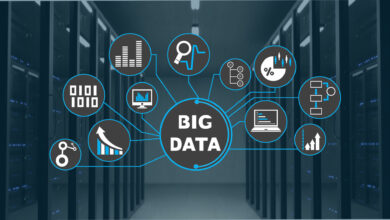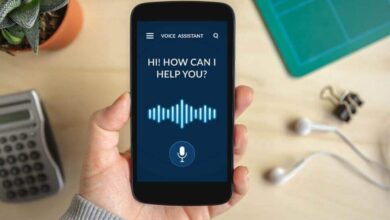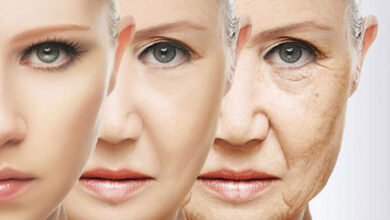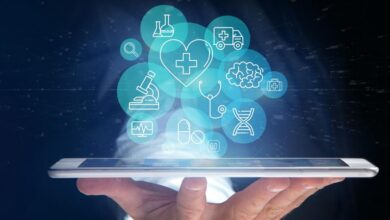Remote Monitoring Devices For Heart Patients A 2025 Update
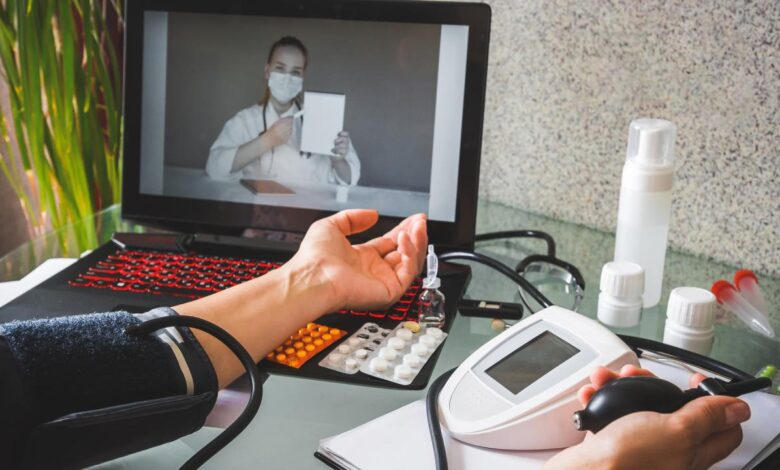
Remote Monitoring Devices for Heart Patients: A 2025 Update introduces a transformative approach to managing heart health from the comfort of one’s home. With rapid advancements in technology, these devices are not only making monitoring easier but also enhancing the quality of life for patients. As we delve deeper into the impacts and features of these devices, it becomes evident how they are revolutionizing heart care.
From wearable ECG monitors to implantable devices that track vital signs, the variety of options available in 2025 reflects significant progress since 2020. These innovations empower patients and healthcare providers alike, ensuring timely interventions and fostering a more proactive approach to heart health management.
Overview of Remote Monitoring Devices

Remote monitoring devices have revolutionized the way heart patients manage their health, allowing for continuous observation of vital signs without the need for constant hospital visits. These devices have become integral in providing timely data to healthcare providers, enabling early intervention when necessary. The increasing prevalence of heart diseases has underscored the importance of these technologies, which not only improve patient outcomes but also enhance the efficiency of healthcare systems.
Since 2020, technological advancements have significantly enhanced the capabilities of remote monitoring devices. Innovations such as better battery life, improved sensors, and advanced connectivity features have made these devices more reliable and easier to use. The integration of artificial intelligence and machine learning has allowed for more sophisticated data analysis, enabling healthcare professionals to make informed decisions based on real-time data. Moreover, the strong push for telehealth due to the COVID-19 pandemic has further accelerated the adoption of remote monitoring technologies.
Types of Remote Monitoring Devices Available in 2025
The variety of remote monitoring devices available in 2025 provides heart patients with numerous options tailored to their specific needs. Here are some of the prominent types of devices currently in use:
- Wearable ECG Monitors: These devices continuously track the electrical activity of the heart, alerting users and healthcare providers of any irregularities in real time.
- Smart Blood Pressure Monitors: Equipped with Bluetooth technology, these monitors can send blood pressure readings directly to a mobile app, allowing for easy tracking and sharing with healthcare providers.
- Pulse Oximeters: These devices measure oxygen saturation levels in the blood and are essential for patients with heart conditions. Many modern pulse oximeters can sync with smartphones to provide ongoing monitoring.
- Smartwatches with Health Monitoring Features: Many smartwatches now include heart monitoring capabilities, such as detecting arrhythmias, and can provide alerts if unusual patterns are detected.
- Implantable Cardiac Monitors: These devices are surgically placed under the skin and continuously monitor heart rhythms, providing long-term data that can help in managing chronic conditions.
The advancements in these devices have not only improved their accuracy but also increased patient engagement by making health monitoring more accessible. With the integration of mobile applications, patients can easily track their health metrics, adhere to prescribed treatment plans, and communicate effectively with their healthcare providers, leading to a more proactive approach to heart health management.
Key Features of 2025 Remote Monitoring Devices
Modern remote monitoring devices for heart patients in 2025 have evolved significantly, introducing features that enhance patient care and facilitate proactive health management. These advancements not only improve patient outcomes but also empower healthcare providers to make timely interventions based on real-time data. Understanding these features is essential for both patients and healthcare professionals in making informed decisions about heart health monitoring.
One of the standout aspects of contemporary remote monitoring devices is their comprehensive data collection capabilities. Modern devices are equipped with advanced sensors that can monitor vital signs such as heart rate, blood pressure, oxygen saturation, and even ECG readings. The integration of these features allows for continuous monitoring, which is critical for early detection of potential health issues.
Essential Features of Modern Remote Monitoring Devices
The following features are considered essential for effective remote monitoring in heart patients, enhancing user experience and clinical outcomes:
- Real-Time Data Transmission: Devices now offer instant data sharing with healthcare providers, enabling timely analysis and quicker decision-making.
- Mobile Connectivity: Many devices utilize smartphone applications that allow patients to track their health metrics and communicate with doctors seamlessly.
- Personalized Health Insights: Advanced algorithms provide tailored feedback based on an individual’s health data, helping patients manage their conditions more effectively.
- Alerts and Notifications: Patients receive alerts for abnormal readings or medication reminders, ensuring adherence to treatment plans and prompt action when necessary.
- User-Friendly Interfaces: Modern devices prioritize ease of use, featuring intuitive designs that cater to all age groups, especially the elderly.
Examples of Innovative Remote Monitoring Devices
Several devices have emerged in 2025, showcasing unique functionalities that set them apart in the market:
- AliveCor KardiaMobile 6L: This device offers a six-lead ECG monitor compact enough to fit in your pocket, providing in-depth heart health analysis.
- Apple Watch Series 9: Beyond basic heart rate tracking, it features advanced sensors for irregular rhythm notifications and blood oxygen monitoring.
- BioBeat: A wearable that combines heart monitoring with respiratory rate and temperature tracking, providing comprehensive insights into a patient’s overall health.
Comparison of Leading Brands in Remote Monitoring Technology
When looking at the competition among leading brands, key players like Philips, Medtronic, and Fitbit have distinct features that cater to different patient needs. Here’s a comparative overview of their offerings:
| Brand | Device Name | Notable Features | Target User Group |
|---|---|---|---|
| Philips | HeartStart Monitor | Advanced analytics, remote diagnostics | Post-operative cardiac patients |
| Medtronic | Guardian Connect | Real-time glucose and heart monitoring | Diabetes patients with cardiac concerns |
| Fitbit | Fitbit Charge 5 | Stress management, heart health metrics | General wellness and fitness users |
“The integration of advanced technology in remote monitoring devices ensures that heart patients receive the best possible care right from their homes.”
Patient Experience and User-Friendly Design
As remote monitoring devices become more integral to managing heart health, the user experience is pivotal for patient compliance and satisfaction. The design of these devices plays a crucial role in ensuring that patients can easily interact with them, ultimately leading to better health outcomes. A user-friendly design not only enhances usability but also promotes confidence among patients as they navigate their health management.
The significance of user-friendly design in remote monitoring devices cannot be overstated. Devices that are intuitive and straightforward encourage patients to engage regularly with their health metrics, thereby fostering a proactive approach to heart health. Poorly designed devices can lead to frustration, decreased adherence, and ultimately negative health consequences. In 2025, advancements in design aesthetics, interface simplicity, and ergonomic considerations have made these devices more accessible and appealing.
Case Studies and Testimonials
Real-life experiences from heart patients provide valuable insights into the effectiveness of user-friendly designs in remote monitoring devices. For instance, Sarah, a 68-year-old patient with a history of heart disease, shared her experience with a smartwatch equipped with remote monitoring capabilities. She stated, “The interface is so simple to navigate. I can check my heart rate and blood pressure without needing to read a complicated manual. It gives me peace of mind knowing I’m monitoring my health effectively.”
Another patient, John, age 75, highlighted the importance of ease of use in a device he’s been using for a year. “I used to dread checking my health stats, but now the device syncs with my phone, and I receive reminders. It feels less like a chore and more like a part of my daily routine.” These testimonials underscore how user-friendly design can transform the patient experience, encouraging regular engagement and promoting better health management.
Recommendations for Improving Patient Experience
To enhance the patient experience with remote monitoring devices, several recommendations can be implemented. These improvements can lead to greater satisfaction and adherence among patients.
The following suggestions can help refine the design and functionality of these essential health tools:
- Simplify User Interfaces: Ensure that the interfaces are intuitive, with clear icons and minimal steps required to access information.
- Incorporate Voice Commands: Adding voice recognition features can assist patients who may struggle with traditional navigation methods.
- Provide Educational Resources: Offering easy-to-understand tutorials and FAQs can empower patients to utilize their devices effectively.
- Enhance Feedback Mechanisms: Implementing features that provide immediate feedback on users’ health metrics can improve patient engagement and understanding.
- Focus on Comfort and Wearability: Invest in ergonomic designs that consider the physical comfort of the patient, especially for long-term wear.
Incorporating these recommendations can result in a more supportive and encouraging environment for heart patients, promoting better adherence to monitoring routines and fostering a sense of control over their health.
Integration with Healthcare Systems
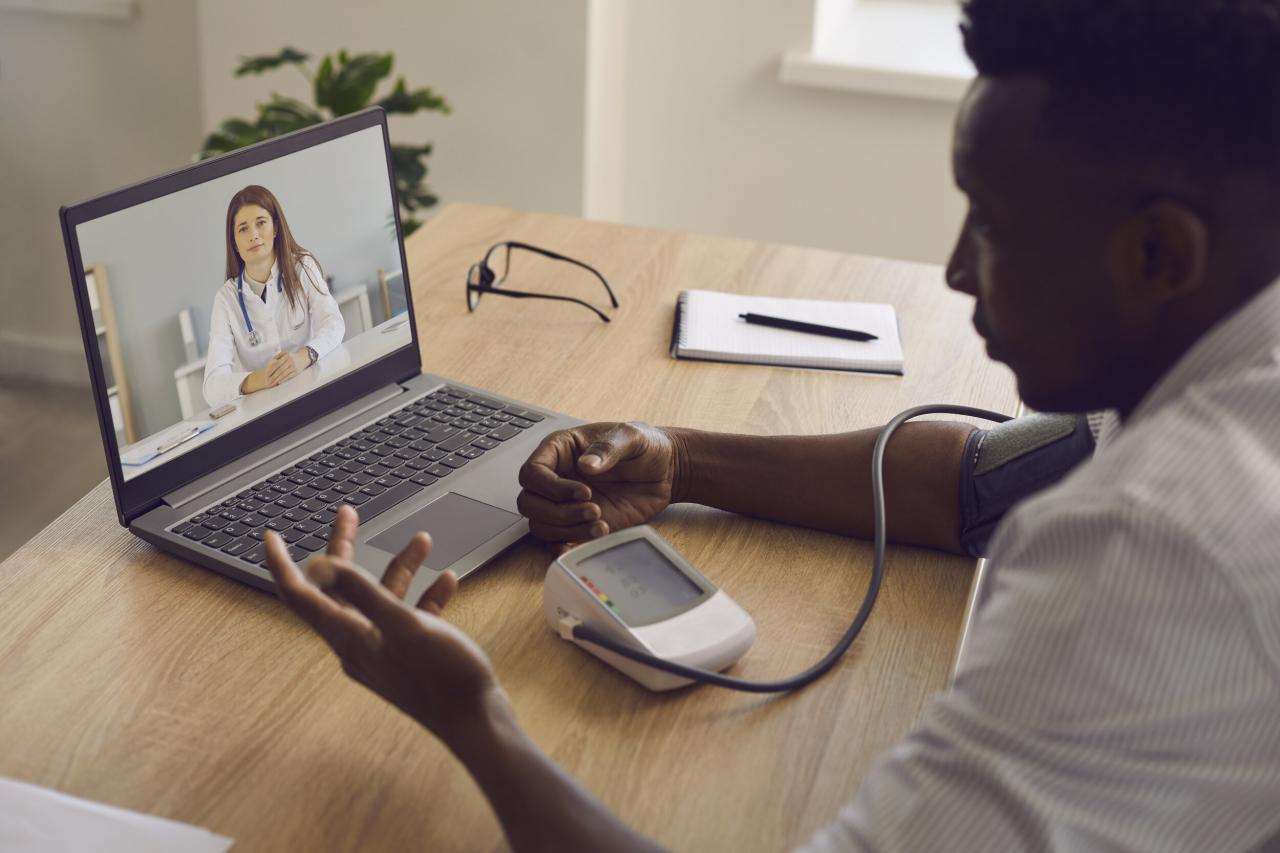
The integration of remote monitoring devices with existing healthcare systems represents a significant advancement in patient care, especially for heart patients. With technology evolving rapidly, these devices not only track vital statistics but also play a crucial role in the seamless exchange of information between patients, healthcare providers, and medical systems. This interconnected approach enhances the management of chronic conditions, allowing for timely interventions based on real-time data.
Remote monitoring devices communicate with healthcare systems through secure data transmission protocols. These devices typically use Bluetooth, Wi-Fi, or cellular networks to send health data—such as heart rate, blood pressure, and oxygen levels—directly to healthcare providers. This continuous flow of information enables clinicians to monitor patients’ conditions from a distance, adjusting treatment plans and medications as needed without requiring frequent in-person visits.
Data Sharing Between Patients and Healthcare Providers
Efficient data sharing is vital for effective remote patient monitoring. The information collected by monitoring devices is transmitted to centralized healthcare platforms, where it can be accessed by doctors and other medical professionals. This process fosters a more collaborative relationship between patients and their healthcare teams.
The importance of these data-sharing practices is illustrated through the following key aspects:
- Improved Communication: Patients can share their daily health metrics easily, allowing healthcare providers to make informed decisions quickly based on the latest data.
- Real-Time Alerts: Many systems provide alerts for abnormal readings, enabling immediate action to be taken when necessary, significantly improving patient outcomes.
- Personalized Care: Continuous data allows clinicians to tailor treatment plans more effectively, addressing individual patient needs in real time.
Comparison of Healthcare Platforms Supporting Remote Monitoring
Several healthcare platforms have emerged to support remote monitoring, each with unique features and compatibility with various devices. Below is a comparative overview of some prominent platforms:
| Platform | Key Features | Device Compatibility | Data Security |
|---|---|---|---|
| HealthConnect | Real-time monitoring, AI analytics, telehealth integration | Compatible with most FDA-approved heart monitoring devices | End-to-end encryption, HIPAA compliant |
| CardioCloud | Patient health dashboards, automated alerts, data visualization | Supports a wide range of cardiac devices | Secure cloud storage, stringent access controls |
| WellTrack | Wearable device integration, patient education resources | Integration with popular fitness trackers and heart monitors | Data anonymization, GDPR compliant |
The interplay between remote monitoring devices and healthcare systems not only enhances patient experience but also streamlines healthcare operations, ultimately leading to improved health outcomes and greater efficiency in managing chronic conditions like heart disease.
Data Security and Privacy Concerns: Remote Monitoring Devices For Heart Patients: A 2025 Update
In the realm of remote monitoring devices for heart patients, data security and privacy are paramount. As these devices collect sensitive health information, ensuring the confidentiality and integrity of patient data is not just a regulatory requirement but a critical aspect of patient trust and safety. With the increasing prevalence of cyber threats, safeguarding patient data has never been more essential.
The significance of data security in remote monitoring devices cannot be overstated. These devices continuously transmit sensitive information, which makes them a prime target for cybercriminals. If patient data is intercepted or accessed improperly, it could lead to identity theft, fraudulent medical claims, or even manipulation of medical information. Thus, healthcare providers and device manufacturers must prioritize robust security measures to protect patient data from unauthorized access.
Common Security Challenges
Various security challenges are commonly associated with remote monitoring devices. Understanding these vulnerabilities is the first step toward addressing them effectively. Here are some notable challenges:
- Data Transmission Vulnerabilities: Information sent over networks may be intercepted if not properly encrypted.
- Weak Authentication Protocols: Devices that lack strong authentication mechanisms can be easily compromised by unauthorized users.
- Software Vulnerabilities: Outdated software can contain security flaws that are exploitable by attackers.
- Inadequate Device Management: Lack of proper management and monitoring of devices can lead to unaddressed security risks.
- Third-Party Risks: Integration with third-party applications and systems can introduce additional vulnerabilities.
Best Practices for Ensuring Patient Data Privacy
To mitigate the risks associated with data security in remote monitoring devices, several best practices can be adopted. Implementing these strategies can significantly enhance the protection of patient information:
- Use Strong Encryption: Always encrypt data during transmission and storage to prevent unauthorized access.
- Implement Multi-Factor Authentication: Require multiple forms of verification to enhance device access security.
- Regular Software Updates: Keep device software up to date to fix known vulnerabilities and enhance security features.
- Conduct Regular Security Audits: Periodically assess devices and systems for security weaknesses and address them promptly.
- Educate Patients: Provide educational resources to patients regarding data security and best practices for safeguarding their information.
“Protecting patient data is not just a regulatory obligation; it’s the foundation of patient trust in healthcare technology.”
Future Trends in Remote Monitoring Technology
As we look ahead to 2030, the landscape of remote monitoring devices for heart patients is set to undergo transformative advancements. These innovations will likely enhance patient care, improve health outcomes, and streamline integration with healthcare systems. By harnessing cutting-edge technologies, the future of remote monitoring promises to empower both patients and healthcare providers with actionable insights and real-time data.
Anticipated advancements in remote monitoring devices include smarter sensors, better connectivity, and more intuitive user interfaces. As technology evolves, we expect devices to become even more compact and user-friendly, offering seamless integration into patients’ daily lives. Enhanced data analytics will enable healthcare professionals to make more informed decisions based on real-time patient data, leading to timely interventions and improved overall health management.
Emerging Technologies Impacting Remote Monitoring
A variety of emerging technologies are poised to significantly influence the future of remote monitoring for heart patients. These technologies are designed to enhance the effectiveness, reliability, and accessibility of monitoring systems.
1. Wearable Devices: Advancements in wearable technology, such as smartwatches and fitness bands, are enabling continuous monitoring of heart rate, rhythm, and other vital signs. Devices equipped with advanced sensors will allow for real-time data collection and analysis.
2. Telemedicine Integration: The integration of remote monitoring devices with telemedicine platforms will facilitate virtual consultations and improve communication between patients and healthcare providers. This convergence can streamline care delivery and expand access to specialists.
3. 5G Connectivity: The rollout of 5G networks will enhance data transmission speeds and connectivity for remote monitoring devices, enabling real-time updates and reducing latency in critical health data.
4. Ingestible Sensors: Innovations in ingestible technology may lead to the development of electronic capsules that monitor heart health from within the body, providing valuable insights into cardiovascular health in real-time.
The convergence of these technologies creates a more holistic approach to patient care, allowing for proactive management of heart conditions.
Potential of AI and Machine Learning in Remote Monitoring
The integration of artificial intelligence (AI) and machine learning (ML) into remote monitoring devices holds remarkable potential for enhancing patient care and health outcomes. These technologies can analyze vast amounts of data, identifying patterns and trends that might be overlooked by human analysis.
1. Predictive Analytics: AI algorithms can be trained to predict potential health issues based on historical data and real-time monitoring. For instance, by analyzing heart rate variability and other parameters, AI can signal potential arrhythmias before they become acute.
2. Personalized Health Insights: Machine learning can tailor health recommendations to individual patients, considering their unique health profiles and histories. This personalized approach can enhance patient engagement and adherence to treatment plans.
3. Automation of Data Analysis: AI can automate the analysis of data collected from remote monitoring devices, reducing the workload on healthcare professionals and allowing them to focus on patient care rather than data management.
4. Enhanced Decision Support Systems: AI-powered applications can provide healthcare providers with evidence-based recommendations for treatment options, facilitating improved clinical decision-making.
With continued advancements in AI and ML, remote monitoring devices will not only collect data but also provide actionable insights, transforming the way heart health is managed.
Regulatory and Compliance Considerations
The landscape for remote monitoring devices for heart patients is shaped significantly by regulatory and compliance standards. These regulations ensure that devices not only serve their intended medical purposes but also maintain patient safety and data integrity. As these technologies evolve, so too do the requirements that govern their development and deployment.
Regulatory bodies, such as the FDA in the United States and the EMA in Europe, have established key standards that manufacturers must adhere to when developing remote monitoring devices. These standards aim to address safety, efficacy, and quality in medical devices, and compliance challenges often arise due to the rapidly changing technological landscape in healthcare.
Key Regulatory Standards for Remote Monitoring Devices
Compliance with regulatory standards is crucial for manufacturers of remote monitoring devices. Some of the key standards include:
- ISO 13485: This international standard specifies requirements for a quality management system where an organization must demonstrate its ability to provide medical devices and related services that consistently meet customer and regulatory requirements.
- IEC 62304: This standard Artikels the life cycle requirements for medical device software, ensuring that software used in remote monitoring devices is safe and effective throughout its life cycle.
- FDA’s 510(k) pathway: This requires manufacturers to demonstrate that their device is substantially equivalent to a legally marketed device, which is a common route for remote monitoring devices seeking approval in the U.S.
- GDPR: For devices operating in Europe, compliance with the General Data Protection Regulation is essential for ensuring patient data privacy and security.
Compliance challenges can arise from several aspects of product development and marketing. These can include navigating the complex regulatory landscape, meeting the diverse requirements of different countries, and maintaining documentation for regulatory submissions. In addition, with the advent of rapidly evolving technology, manufacturers must stay ahead of the curve in understanding how new advancements impact regulatory requirements.
Adaptation Strategies by Manufacturers
Manufacturers are increasingly proactive in adapting to changes in regulations, which is essential for maintaining market access and ensuring patient safety. Companies are adopting several strategies to align with regulatory changes, including:
- Continuous Training: Providing ongoing education and training for staff on the latest regulatory updates to ensure compliance throughout the product development process.
- Collaboration with Regulatory Agencies: Engaging with regulatory bodies early in the development process to gain insights and guidance on compliance requirements.
- Investment in Quality Management Systems: Implementing robust quality management systems that incorporate regulatory requirements from the outset, which helps streamline the approval process.
- Emphasis on Cybersecurity: With increasing concerns about data security, manufacturers are prioritizing cybersecurity measures in device design to comply with both regulatory requirements and emerging industry standards.
As the market for remote monitoring devices continues to grow, staying compliant with evolving regulations will remain a critical factor for manufacturers to ensure the safety and effectiveness of their products while maintaining the trust of healthcare providers and patients alike.
Cost Implications and Accessibility
The integration of remote monitoring devices into healthcare for heart patients has revolutionized patient care, but it also brings significant cost implications and accessibility challenges. Understanding these factors is essential for both patients and healthcare systems to ensure effective utilization of this technology.
Cost implications can vary widely based on device type, software, and healthcare provider fees. While some devices may offer a one-time purchase cost, others may require ongoing subscription fees for data monitoring and analysis. Patients may face medical expenses that can accumulate quickly, especially for those who might need multiple devices or specialized monitoring services. Additionally, the burden on healthcare systems can lead to increased operational costs as they invest in the infrastructure necessary to support these technologies.
Cost Breakdown of Remote Monitoring Devices, Remote Monitoring Devices for Heart Patients: A 2025 Update
When considering the costs associated with remote monitoring devices, it is essential to look at the various expenses involved:
– Device Cost: The initial purchase price of remote monitoring devices can range from a few hundred to several thousand dollars, depending on the complexity and features.
– Subscription Fees: Many remote monitoring systems require monthly or annual fees for access to cloud services, data storage, and analysis, which can add significantly to total expenses.
– Healthcare Provider Fees: Patients may incur costs related to consultations or follow-up appointments that utilize data from these devices, which can vary based on the provider’s pricing structure.
– Insurance Coverage: The extent of insurance coverage can affect out-of-pocket costs for patients. Some insurance plans may cover the majority of the device costs, while others may not provide adequate support, leading to higher personal expenses.
Improving accessibility to these advanced technologies is critical for ensuring all heart patients can benefit from remote monitoring. Strategies to enhance accessibility can include:
– Subsidies and Financial Assistance: Government or healthcare organizations can provide subsidies to lower costs for patients, making devices more accessible to low-income individuals.
– Partnerships with Tech Firms: Collaboration between healthcare providers and technology manufacturers can lead to more affordable devices and service packages that cater to a broader audience.
– Education and Awareness: Increased awareness and education about the benefits of remote monitoring can encourage patients to seek out these technologies and ensure they are covered under their insurance plans.
In summary, while remote monitoring devices present a promising advancement in heart care, understanding the associated costs and addressing accessibility is crucial for their successful implementation and widespread adoption. By focusing on innovative strategies and supportive policies, the healthcare system can make these essential tools available to all patients in need.
Epilogue
In conclusion, the evolution of Remote Monitoring Devices is paving the way for a future where heart health is managed seamlessly and effectively. As technology continues to advance, the integration of user-friendly designs, enhanced data security, and compliance with healthcare standards will only strengthen the relationship between patients and their healthcare providers. The journey towards better heart health through remote monitoring is just beginning, and it holds great promise for all.
Question & Answer Hub
What are remote monitoring devices?
Remote monitoring devices are tools that allow patients to track their health metrics at home and share that data with healthcare providers.
How do remote monitoring devices benefit heart patients?
They provide real-time data, enabling timely medical interventions, reducing hospital visits, and improving patient outcomes.
What types of remote monitoring devices are available in 2025?
In 2025, options include wearable ECG monitors, smartwatches with heart tracking, and implantable cardiac devices.
Are remote monitoring devices secure?
Yes, but they require robust data security measures to protect patients’ personal health information.
Will insurance cover the cost of remote monitoring devices?
Coverage varies by provider, but many insurance plans are beginning to include these devices as part of their benefits.

